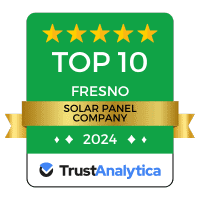![]()
Mike and the team were EXTREMELY helpful and knowledgeable. All our questions were answered immediately, and we were never left with any concerns. The installation was quick (only a few hours for 30+ panels) and the install team was friendly. As a bonus, the system is super affordable and looks great – not an eye sore like some systems you see. I will 100% recommend to anyone considering Solar!











